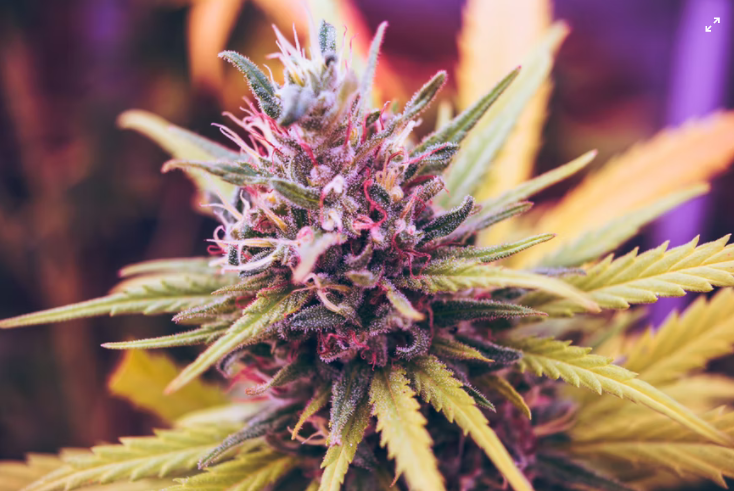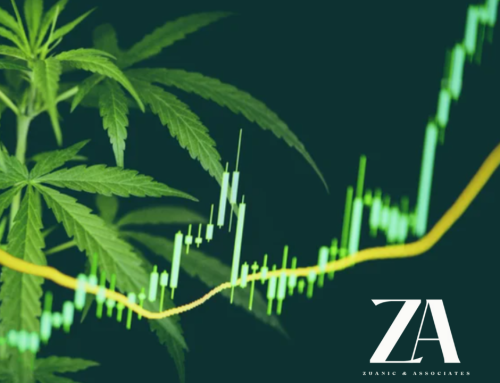Medical Marijuana Market Size Worth $40 Billion by 2028 at 19.2% CAGR
NEW YORK – The Insight Partners published latest research study on “Medical Marijuana Market Forecast to 2028 – COVID-19 Impact and Global Analysis By Product (Dried Form and Extract Form), Application (Pain Management, Tourette Syndrome, Alzheimer’s Disease, Migraines, Depression and Anxiety, Multiple Sclerosis, Cancer, and Others), Distribution Channel (Retail Pharmacy, E-Commerce, and Others), and Geography”, the global medical marijuana market size was valued at $11.70 Billion in 2021 and is likely to reach value of $40.02 Billion by 2028; it is estimated to grow at a CAGR of 19.2% from 2022 to 2028.
Medical marijuana Market: Competitive Landscape and Key Developments
Aphria, Inc.; Canopy Growth Corporation; CanaQuest Medical Corporation; GW Pharmaceuticals; Organigram Holdings Inc.; VIVO Cannabis Inc.; Panaxia Pharmaceutical Industries Ltd.; Phoena Holdings Inc.; Emerald Health Therapeutics Inc.; and MARICANN INC. are among the key companies operating in the medical marijuana market. Major players focus on expanding and diversifying their market presence and clientele, thereby tapping prevailing business opportunities.
In June 2021, Panaxia signed an agreement with AxioNovo GmbH, a German pharmaceutical company. The agreement, a part of Panaxia’s collaboration with Neuraxpharm, is for the marketing, sale, and distribution of a new series of medical cannabis products, with a unique formulation, designed and being used in Israel for oncology patients. These formulations were distributed in Germany as pharmaceutical intermediates for magistral preparations.
In August 2019, Canopy Growth Corporation announced that it had partnered with one of the largest global sellers of premium cannabis accessories, Greenlane Holdings, Inc, (“Greenlane”). This partnership gives Greenlane exclusive distribution rights of Storz & Bickel vaporizers throughout the US.
Medical Marijuana Market: Key Insights
The global medical marijuana market growth is attributed to the increasing approvals of medical marijuana products and rising acceptance of the medicinal use of marijuana. Additionally, widespread distribution of medical marijuana is likely to emerge as a significant trend in the market during the forecast period. However, the illegal use of cannabis as a street drug and misconceptions regarding marijuana limit the market growth.
North America dominates the medical marijuana market. The US holds the largest share of the market in the region. Increasing incidence of chronic ailment among the growing geriatric population and expanding presence of key market players drive the medical marijuana market in the country.
The increasing cannabis legalization in the US and growing government support to enhance medical cannabis studies also offer an attractive environment for the players in the medical marijuana market. Product launches are also fueling the growth of the North America medical marijuana market. The increasing cannabis legalization in the country contributes to its increased demand. According to the National Conference on State Legislatures, about 37 states and the District of Columbia have legalized marijuana usage for medical purposes as of April 2022.
The most common use of medical marijuana in the U.S. is for pain control; it is effective for chronic pain that plagues millions of Americans, especially as they grow older. In June 2018, the Food and Drug Administration (FDA) approved the country’s first drug derived from marijuana, cannabidiol (Epidiolex), manufactured by G.W. Pharmaceuticals. It has been approved for children and adults above two years. The organization also approved three synthetic cannabis-related drug products—Marinol (dronabinol), Syndros (dronabinol), and Cesamet (Nabilone).
Medical Marijuana Market Insights – Increasing Approvals of Medical Marijuana Products:
The medicinal potential of marijuana has attracted various researchers and companies to use marijuana in medical applications. For instance, tetrahydrocannabinol (THC) is predominantly used for producing medicinal products. The US Food and Drug Administration (FDA) has approved THC-based medicinal products such as Cesamet, which contains nabilone as its active ingredient. Cesamet is a synthetically derived product that has a structure similar to THC. Cesamet is prescribed for the treatment of nausea in patients receiving chemotherapy. Cesamet is generally prescribed when other medications cannot control nausea and vomiting. The FDA has also approved Marinol and Syndros for therapeutic uses in the US. Marinol and Syndros contain the active ingredient dronabinol—a synthetic 9-THC considered the psychoactive component of cannabis.
Marinol and Syndros drugs are prescribed to stimulate appetite in patients with wasting syndrome developed as one of the indications of AIDS. Similarly, various marijuana-based products have been approved or are in clinical trials. For instance, nabiximols (Sativex) is an approved drug commercialized in Canada. Nabiximols is a cannabis extract used to treat spasticity and neuropathic pain related to multiple sclerosis. It is formulated with a combination of THC and other cannabidiol (CBD).
In February 2020, CanaQuest Medical Corp, a Canadian company, applied for the approval of the production and commercialization of Mentabinol to Health Canada. Mentabinol is a THC-based product, and its approval application has been filed under the Cannabis Act. Therefore, an increase in approval of marijuana-based products by the FDA is driving the medical marijuana market.
Medical Marijuana Market: Segmental Overview
Based on product, the medical marijuana market is bifurcated into dried form and extract form. In 2021, the extract form segment held a larger market share. Moreover, the extract form segment is expected to register a higher CAGR from 2022 to 2028. In terms of application, the market is segmented into pain management, Tourette’s, Alzheimer’s disease, migraines, depression and anxiety, multiple sclerosis, cancer, and others. The pain management segment held the largest market share in 2021. However, the multiple sclerosis segment is anticipated to register the highest CAGR in the market during the forecast period. Based on distribution channel, the market is categorized into retail pharmacy, e-commerce, and others. The retail pharmacy segment held the largest market share in 2021. However, the e-commerce segment is anticipated to register the highest CAGR in the market during the forecast period.
Impact of COVID-19 on Medical Marijuana Market Growth:
The COVID-19 pandemic harmed most companies’ overall sales; however, it slightly impacted the medical marijuana market due to the increased demand for medical marijuana to treat COVID-19 patients with extreme conditions. Domestic production of medical marijuana was not disrupted by the COVID-19 pandemic, with respect to the cultivation sites that were already established before the COVID-19 restrictions were imposed. Stockpiling of marijuana by users may have led to small price increases at wholesale and retail market levels. Supply shortages due to the COVID-19-related restrictions and issues linked to the distribution of medical marijuana have led to an increase in the prices of medical marijuana. Several research institutes and manufacturers of medical marijuana are collaborating to develop a novel vaccination for the treatment and prevention of COVID-19 disease.
(This information is primarily sourced from The Insight Partners. Highly Capitalized has neither approved nor disapproved the contents of this news release. Read our Disclaimer here).



































